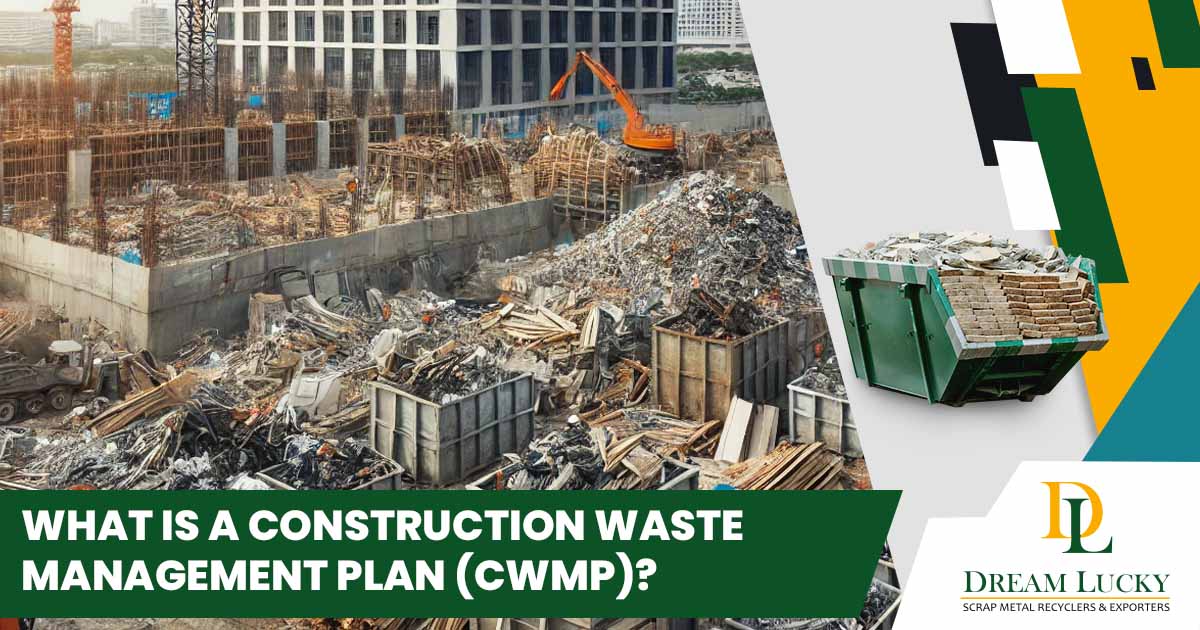
Construction waste management is an essential part of building sustainably in Australia. As construction projects generate significant amounts of waste, having a solid Construction Waste Management Plan (CWMP) can help builders reduce waste, promote recycling, and comply with local regulations.
This guide breaks down what a CWMP is, its key components, and how to create one that meets Australian standards.
What is a Construction Waste Management Plan (CWMP)?
A Construction Waste Management Plan (CWMP) is a document that outlines how a construction project will handle waste. The aim is to minimise waste, ensure proper disposal of materials, and promote recycling.
With a CWMP in place, builders can not only reduce their environmental impact but also meet local council requirements and save on disposal costs.
Why is a Construction Waste Management Plan Important?
- Environmental Responsibility
The construction industry is one of the largest waste producers in Australia. By managing waste effectively, builders can significantly reduce their environmental footprint. - Regulatory Compliance
Each state and territory has specific rules governing waste management. A CWMP helps ensure compliance with these regulations, avoiding potential fines and delays in projects. - Cost Savings
Reducing waste can lead to lower disposal costs and potentially allow for materials to be reused or recycled, saving money in the long run.
Key Components of a CWMP
A comprehensive CWMP typically includes the following sections:
1. Goals and Objectives
This section outlines what the project aims to achieve regarding waste reduction. Clear targets help guide waste management efforts and measure success.
2. Waste Types
Identify the types of waste expected during the construction process. This could include materials like:
- Timber
- Concrete
- Metal
- Hazardous waste like asbestos
Recognising these waste types is crucial for planning how to handle and dispose of them safely.
3. Management Strategies
This section details how waste will be managed throughout the project. Strategies might include:
- On-Site Sorting: Setting up bins for different types of materials (e.g., recyclables, general waste, hazardous waste).
- Recycling and Reuse: Working with waste management contractors to recycle materials or find ways to reuse them on-site.
- Proper Disposal: Ensuring any leftover waste is disposed of according to local regulations.
4. Roles and Responsibilities
Clearly define who is responsible for managing waste on site. This could involve assigning tasks to team members and ensuring everyone knows their role in waste management.
5. Monitoring and Reporting
Implement a system for tracking how much waste is generated and how well the CWMP is working. Regular monitoring helps identify areas for improvement and ensures targets are met.
Requirements in Western Australia
In WA, the Waste Avoidance and Resource Recovery Act 2007 provides guidelines for managing construction waste. Local councils typically require builders to submit a CWMP as part of their development application.
This plan must include:
- Waste Minimisation Strategies: Methods for reducing waste generation from the outset.
- Recycling and Reuse Practices: Plans for maximising the recovery of materials for reuse or recycling.
- Disposal Procedures: Information on how any remaining waste will be disposed of in line with environmental regulations.
The Construction Waste Management Plan Guidelines offered by WasteNet provide a useful framework for creating an effective CWMP. These guidelines encourage builders to plan, identify potential waste streams, engage qualified contractors for waste management, and educate their teams on the CWMP.
Construction Waste Management Plan Sample
Here’s a straightforward Construction Waste Management Plan sample:
- Project Details
Include:- Project name
- Location
- A brief description
- Waste Streams Identification
List the types of waste expected and estimated volumes. This helps in planning for waste management. - Management Strategies:
- On-site sorting of recyclable materials.
- Engaging contractors for off-site recycling.
- Regularly monitoring waste generation against targets.
- Training Programs
Outline any training required for staff involved in the project to ensure everyone understands the CWMP and their responsibilities.
Effective construction waste management is vital for minimising the environmental impact of building projects in Australia. By developing a comprehensive CWMP and following state-specific regulations, builders can contribute to sustainability goals and comply with local council requirements.
Implementing a Construction Waste Management Plan (CWMP) not only benefits the environment but also boosts a builder’s reputation in the industry. By partnering with Dream Lucky Scrap Metal for construction rubbish removal, you can meet the growing demand for environmentally responsible practices and gain a competitive edge.
For more information on creating a Construction Waste Management Plan (CWMP), contact us or check resources from WasteNet and your local council. Take charge of your building site’s waste management today – it’s a simple way to help our environment and save money while you’re at it.
Omer Bekhit
The dedicated owner and operator of Dream Lucky Scrap Metal. He has been at the forefront of ethical scrap metal recycling, exporting, and dealing. With a hands-on approach to the business, Omer ensures that every transaction is conducted with transparency and sustainability in mind.